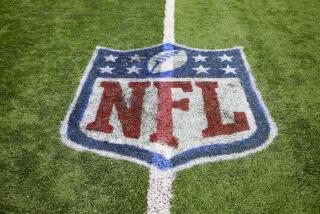With or without a history of concussion, football impacts memory
With or without a history of diagnosed concussion, top-level college football players who have logged more years in the game are more likely than non-players to have structural differences in a region of the brain that is key to memory, says a new study. The new research, conducted on 50 college-level football players and 25 non-playing peers, also found a link between longer years on the field and slower reaction times on cognitive tests.
For athletes in contact sports, the meaning of this small study is not immediately clear: Whether size matters when it comes to the size of the brain’s hippocampus -- the structure that was found to be smaller in football players than in healthy peers who didn’t play -- remains open to debate; and research has not yet determined whether time spent away from repeated blows to the head will restore impaired reaction time.
But the findings do suggest that even when a young athlete weathers a high school or college season concussion-free, smaller blows to the head may result in cumulative changes. And it establishes that after many such years, the brains of young adults engaged in contact sports may be poised on a knife’s edge: While youth and the brain’s inherent resilience may erase the effects of early impacts, the structural changes detected here could presage a more worrisome outcome. In neurodegenerative disorders such as Alzheimer’s and Parkinson’s diseases, similar structural changes in the brain precede the appearance of symptoms by years and possibly decades.
“We need to know what the long-term consequences are of having a smaller hippocampus,” said Dr. Jeffrey Bazarian, an emergency physician at the University of Rochester Medical Center, who was not involved in the current research. Bazarian’s own research, published last month, suggests that following a season of unconcussed football play at the college level, an individual who steered clear of any blows to the head for period of six months would, on average, continue to show signs of wear and tear in his brain.
“We really need to know what these players look like 10 to 15 years from now, and we have to do the hard work of knowing what the threshold is, in terms of hits to the head, for hippocampal damage.” Doing that, he suggested, could guide parents and coaches in limiting the duration or frequency of games, scrimmages or practices in which contact is made, or to recognize a blow to the head short of concussion that should trigger a recovery period for an athlete.
But the only way to develop such guidelines, said Bazarian, is to follow these and other athletes forward in time, which “takes time and money. The question is, do we have the will to put the necessary resources behind that goal?”
In the latest study, published Tuesday in JAMA, researchers at the Laureate Institute for Brain Research in Tulsa, Okla., tested the cognitive performance and scanned the brains of 50 NCAA Division 1 football players. Half of those athletes had sustained at least one concussion that was diagnosed by a physician and had had brain imaging within a month of the event. The other half had no history of diagnosed concussion, although as Division 1 college athletes, they could be expected to have played contact football for several years by the time they were recruited into the study.
For comparison, the researchers recruited and scanned the brains of 25 healthy males of similar age and health status who did not play contact sports.
The hippocampus -- a seahorse-shaped structure at the heart of the brain that plays a key role in learning and memory -- was, on average, smaller in the athletes than in the control group, and that difference was even more pronounced when comparing athletes who had sustained one or more concussions with the healthy controls.
The more years an athlete had participated in organized football, the smaller, on average, his hippocampus was. And as athletes’ years playing organized football increased, so too did their reaction time on tests of cognitive processing speed.
The authors stressed that repeated blows to the head may not be the cause of the structural differences they saw in athletes’ brains. Genetic variations, environmental factors and hormones can all influence the size of the brain’s hippocampus. And stress hormones specifically, which likely run high in elite athletes’ bodies, may suppress the regeneration of brain cells and stunt growth.
Nevertheless, the authors wrote that their study’s findings “should serve as an impetus for future longitudinal research,” which may begin to flesh out the clinical significance of changes in the brain’s size and structure and the way it functions, and to gauge the levels of impact at which damage occurs that is not readily undone.







